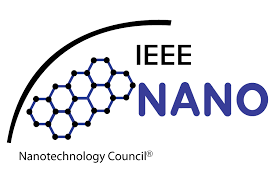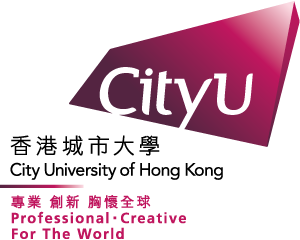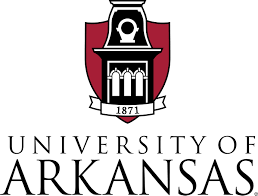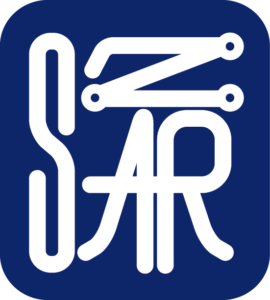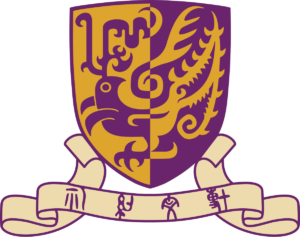SS1: Bio-Sensing/Microfluidics/Nanofluidics
Time: 10:30 – 12:10 pm, Saturday, December 2, 2017
Location: Demonstration Hall,1/F
Session Chair: Gwo-Bin LEE, National Tsing Hua Univ., Taiwan
Description: This session seeks papers that describe studies involving biosensing, microfluidics and nanofluidics. Both theoretical and experimental works are welcome.
Electrochemical impedance spectroscopy-based affinity biosensing chips integrated with AC electrokinetic vortexes, Ching-Chou WU, National Chung Hsing Univ., Taiwan
Integration of blood filters, vacuum modules, and molecularly-imprinted biosensors on electrical sensing chips for on-site sample analysis, Chien-Chong HONG, National Tsing Hua Univ., Taiwan
The application of aptamers in molecular diagnosis, Chih-Hung WANG, National Tsing Hua Univ., Taiwan
Machine vision for cell sensing on a chip, Chia-Hung Dylan TSAI, National Chiao Tung Univ., Taiwan
Characteristics and chemosensitivity of cancer cells cultured in a gel-free paper substrate, Ghe-Fu LIN; Kin Fong LEI, Chang Gung Univ.; Linkou Chang Gung Memorial Hospital, Taiwan (Paper – 8)
Inhibition effect of tumor spheroids under the electrical stimulation, Chun-Hao HUANG; Kin Fong LEI, Chang Gung Univ.; Linkou Chang Gung Memorial Hospital, Taiwan (Paper – 9)
SS2: Intelligent Drug Delivery System and Therapeutical Technology
Time: 10:30 – 12:10 pm, Saturday, December 2, 2017
Location: Lecture Theater, 2/F
Session Chair: Ning GU, Southeast Univ., China
Description: Utilization of carriers to deliver drugs into specific positions in vivo has been a critical issue in clinic. Nanomaterials here can play an important role because of the multi-function and tailorable response to microenvironment in vivo. In this session, five outstanding scholars will show their fantastic design and ideas in this area. It will be seen how the organic as well as inorganic nanostructures are used as a multi-functional platform for simultaneous detection and therapy such as photothermia, magnetic force and chemical therapy. Furthermore, a magnetic field-directed targeting technology will be presented for the magnetically-labeled biomaterials.
Tumor-penetrating polymer drug delivery system, Xiqun JIANG, Nanjing Univ., China
Tungsten oxide as multifunctional theranostic systems for multimodal imaging and therapy of cancer, Shaoqin LIU, Harbin Institute of Technology, China
Activatable cancer nanotheranostics, Peng HUANG, Shenzhen Univ., China
Nanomedicines and stem cells: A potential marriage for targeted cancer treatment, Yu CHENG, Tongji Univ., China
Magnetically controlled specific aggregation of magnetic particles in mouse blood vessel, Jianfei SUN, Southeast Univ., China
SS3: Micro- and Nanotechnologies for Engineering Living Systems
Time: 10:30 – 12:10 pm, Saturday, December 2, 2017
Location: B103, 1/F
Session Chair: Jangho KIM, Chonnam National Univ., Korea
Description: Micro- and nanoscale environments including molecules, biophysical cues, and interactions between cell-cell and cell-substrates play important roles to engineer the complex and functional living systems. This session will highlight emerging micro- and nanotechnologies that can control functions of living systems. These approaches will provide novel insights into developing new strategies for engineering functions of living systems for various applications such as cell therapy, tissue engineering, regenerative medicine, and drug delivery for improving human life.
Modulating the biomechanical culture environment for improved differentiation of human mesenchymal stem cells, Ki-Taek LIM, Kangwon National Univ., Korea
Engineered blood-brain barrier model for recapitulating brain microvasculature physiology, Hong Nam KIM, Korea Institute of Science & Technology (KIST), Korea
Natural resource-derived biomaterials with nanotechnology and 3D printing techniques, Hoon SEONWOO, Sunchon National Univ., Korea
Lipid-based biomimetic assemblies of nanomaterials, Kyunghoon KIM, Sungkyunkwan Univ., Korea
Designing multisacle topographical structures for controlled morphology and function of cells, Jangho KIM, Chonnam National Univ., Korea
SS4: New Generation of Multifunctional Bio-Therapeutic Nanoparticles
Time: 14:50 – 16:30 pm, Saturday, December 2, 2017
Location: Demonstration Hall,1/F
Session Chair: In-Kyu PARK, Chonnam National Univ. Medical School, Korea
Description: Nanotechnology plays a vital role in biomedical applications, especially for the diagnosis and treatment of various diseases. Particles in the size range of 10 to 1000 nanometers are usually termed as nanoparticles. They have attracted much interest in recent years as ideal candidates for various biomedical applications such as drug delivery systems, biosenors and bio imaging owing to their specific properties of size tunability and intrinsic hydrophilic surfaces. This session will include a wide-ranging field that encompasses different applications of nanoparticles such as oral delivery of biotherapeutics, cancer theranostics, nanocarrier with bioengineered stem cell membrane, biodegradable nano-patterned patches and nanoparticle-laden contact-lens.
Biomacromolecules for ROS-mediated cancer theranostics, Jae Hyung PARK, Sungkyunkwan Univ., Korea
Nanoparticle-laden contact-lens for detecting tear glucose, Dong Yun LEE, Hanyang Univ., Korea
Biodegradable nanopatterned patches to regulate cell fate and acceleration of bone regenerations, Hee Seok YANG, Dankook Univ., Korea
Functional nanocarriers with bioengineered stem cell membrane for therapeutic target in ischemia, Soo-Hong LEE, CHA Univ., Korea
Taurocholic acid conjugated targeted nanocarriers for the oral delivery of biomacromolecules, Yong-kyu LEE, Korea National Univ. of Transportation, Korea
SS5: Micro/Nano Devices for Cancer Research
Time: 14:50 – 16:30 pm, Saturday, December 2, 2017
Location: Lecture Theater, 2/F
Session Chair: Kin Fong LEI, Chang Gung Univ., Taiwan; Univ. of Minnesota, Twin Cities, USA
Description: This session seeks papers that describe studies involving micro/nano devices for cancer research. Both theoretical and experimental works are welcome.
Lithographic free cell patterning for tumor metastasis study, Liang ZHAO; Tengfei GUO; Lirong WANG; Yang LIU; Ganyu CHEN; Hao ZHOU; Meiqin ZHANG, Science & Technology Univ. of Beijing, China
A parallel cell analyzer by using microlens immersed three-dimensional microfluidic device, Yu-Jui FAN, Taipei Medical Univ., Taiwan
Optical imaging guided laser therapy for accurate tumor removal, Meng-Tsan TSAI, Chang Gung Univ., Taiwan; Chang Gung Memorial Hospital, Taiwan
A micromixer for rapid immunoprecipitation of target peptide for oral cancer screening, Wei-Ting SU; Ya-Yu HSUEH; Heng-Yun CHANG; Chia-Chun WU; Yung-Chin HSIAO; Jau-Song YU; Yen-Heng LIN, Chang Gung Univ., Taiwan; Chang Gung Memorial Hospital, Taiwan
Integrating cell culture and immunoassay on a paper substrate for the study of cellular response, Kin Fong LEI, Chang Gung Univ., Taiwan; Chang Gung Memorial Hospital, Taiwan
SS6: Nano/Micro Systems for Biomedical Applications
Time: 14:50 – 18:10 pm, Saturday, December 2, 2017
Location: B103, 1/F
Session Chair: Zhan YANG, Soochow Univ., China
Description: This session seeks papers that describe studies involving micro/nano systems for research in biomedicine or related fields. Both theoretical and experimental works are welcome.
Smart life and micro nano manufacture, Lining SUN, Soochow Univ., China
Self-actuated platinum micro-nano robot, Zhan YANG, Soochow Univ., China
Biosyncretic sensing and actuation with living cells, Lianqing LIU, Shenyang Institute of Automation, China
Bionics acoustical MEMS/NEMS sensing technology and application, Xiujian CHOU, North Univ. of China, China
High precision tilt sensor and tilting measurement system, Xueyong WEI, Xian Jiaotong Univ., China
Micro-robotic bioassembly of in-vitro liver lobules, Huaping WANG, Beijing Institute of Technology, China
Self-actuated platinum micro-nano robot, Zhan YANG, Soochow Univ., China
A fully automated microflow cytometer for astronauts, Honglong CHANG, Northwestern Polytechnical Univ., China
Automated assembly of nanowires pattern using atomic force microscope, Sen WU, Tianjin Univ., China
High spatial-temporal resolution bioimaging using light-sheet fluorescent microscopy system, Peng FEI, Huazhong Univ. of Science & Technology, China
Research on the combination of medicine and engineering based on robot technology, Jun LUO, Shanghai Univ., China
Precision assembly technique and equipment for miniature devices, Xiaodong WANG, Dalian Univ. of Technology, China
Micro/nanorobotics for manipulation and multiparametric characterization, Hui XIE, Harbin Institute of Technology, China
SS7: Bio-Nano Materials
Time: 16:30 – 18:10 pm, Saturday, December 2, 2017
Location: Demonstration Hall,1/F
Session Chair: Kin Fong LEI, Chang Gung Univ., Taiwan
Description: This session seeks papers that describe studies involving bio/nano materials for biomedical applications. Both theoretical and experimental works are welcome.
Magnetic nano-Fe-Rg3 delay hepatocarcinogenesis by remodeling gut microbiota and metabolism, Zhigang REN; Liangjie HONG; Xiaoxiong ZHAO; Xinmei CHEN; Zujiang YU; Yujun SONG; Xinhua CHEN, Zhengzhou Univ., China; Zhejiang Univ., China; Science & Technology Univ. of Beijing, China; Ministry of Public Health, Hangzhou, China; Shandong Univ. of Traditional Chinese Medicine, China
Two-dimensional materials based nanoprobe for bioimaging and sensing, Mo YANG, Hong Kong Polytechnic Univ., Hong Kong, China
Plasmonic semiconductor nanocrystals: nanotheranostics and toxicity, Wing Cheung LAW; Nanxi RAO; Zhourui XU, Hong Kong Polytechnic Univ., Hong Kong, China
Formation of a neural network on a PEM based micropatterned platform, Yung-Chiang LIU; I-Chi LEE, Chang Gung Univ., Taiwan; Chang Gung Memorial Hospital, Taiwan
Conductive bioimprint for cell culture sensing, Nor Azila A. WAHID; John J. EVANS; Maan M. ALKAISI, Univ. of Canterbury, New Zealand; Univ. of Otago, New Zealand (Paper – 24)
Bio-mimicking chemomechanical actuators as continuous skin monitors, Gagan JODHANI; Pelagia I. GOUMA, Ohio State Univ., USA (Paper – 28)
SS8: Cell Manipulation and 3D Bioprinting for Cancer Detection and Tissue Engineering
Time: 16:30 – 18:10 pm, Saturday, December 2, 2017
Location: Lecture Theater, 2/F
Session Chair: Na LIU, Shanghai Univ., China
Description: Cancer detection and tissue engineering are the most advanced and significant topics in bio fields. Many researchers are contributing to solve the difficulties related efficiency, accuracy, stability, biocompatibility, etc., in these two topics via different ways. Techniques and systems related to manipulation and fabrication in micro/nano scale could provide favorable solutions for these difficulties and have attracted lots of attentions. This session will mainly introduce some recent work progress on cell manipulation and 3D bioprinting around the applications of cancer detection and tissue engineering.
Novel bioactive nanoscale membrane by cell electrospinning, Yuanyuan LIU, Shanghai Univ., China
Multimodal single-cell death recognition based on optically induced electrokinetics cell manipulation and data mining, Yuliang ZHAO, Northeastern Univ., China
Enzyme analytical biosensor based on self-assembly of lipid bilayer, Juan ZHANG, Shanghai Univ., China
Development of 3D printing methods for hydrogels, Runhuai YANG, Anhui Medical Univ., China
Detection and regulation of cells’ physical properties utilizing micro manipulation and fabrication techniques, Na LIU, Shanghai Univ., China
SS9: Recent Platform Technologies for Nanobiosensor
Time: 15:00 – 16:40 pm, Sunday, December 3, 2017
Location: Demonstration Hall,1/F
Session Chair: Hyun Ho LEE, Myongji Univ., Korea
Description: There has been an expanding burst of novel platform technologies designed for nanobiosensor development. Recent platforms can include exotic nano-structure, passive microfluidic, cell-culture or organ system for biomolecule delivery, fibrous systems for sensor, etc. In this session, state-of-art platform technologies for recent nanobiosensor will be introduced and discussed toward further applications on the progress of nanomedicine. In addition, physical and chemical fundamentals behind the novel platform technologies will be elucidated in details and cooperative and integrative research topics can be induced.
Biomolecule matrix platforms for bioelectronic sensor, Hyun Ho LEE, Myongji Univ., Korea
Anti-bacterial and biofilm removal properties of metal nanoparticles decorated carbon nanomaterials, Jonghoon CHOI, Chung-Ang Univ., Korea
Polycation mediated growth factor delivery for tissue regeneration, Kyobum KIM, Incheon National Univ., Korea
Carbon/agarose gel composite micro-fibers: humidity sensors and super-capacitors, Hyung-Jun KOO; Sung-Kon KIM; Ju-Hee SO, Seoul National Univ. of Science & Technology, Korea; Chonbuk National Univ., Korea; Korea Institute of Industrial Technology, Korea
Synthesis of optically active chiral nanostructures without lithography, Bongjun YEOM, Myongji Univ., Korea
SS10: Microfluidic System for Biomedical Applications
Time: 15:00 – 16:40 pm, Sunday, December 3, 2017
Location: Lecture Theater, 2/F
Session Chair: Da-Jeng YAO, National Tsing Hua Univ., Taiwan
Description: This session would introduce several bio-medical applications by using microfluidic system. Impedance based technique will be applied for cell counting and cancer cell screening. Cell based image system will be used for Interaction among cadherin, catenin, and actin. How to modify the surface pattern would be the key for magnetic type of digital microfluidic system. Finally, the design of microreactor array would be performed for high-throughput and low-cost drug screening.
Impedimetric screening of chemosensitivity of cancer cells cultured in a paper-based cell culture model, Kin Fong LEI, Chang Gung Univ., Taiwan
Microelectrode design for electro-impedance cell counting technologies, Chih-Ting LIN, National Taiwan Univ., Taiwan
Interplay of cadherin and actin filament can regulate hepatocellular carcinoma physiology in cirrhotic microenvironment, Chi-Shuo CHEN, National Tsing Hua Univ., Taiwan
Surface patterning for magnetic digital microfluidics-based diagnostic assays, Yi ZHANG, Nanyang Technological Univ., Singapore
Microreactor array with chemical and oxygen concentration gradient, Szu-I YEH; Jing-Tang YANG, National Cheng Kung Univ., Taiwan
SS11: Micro/Nano Robotics for Biomedical Applications
Time: 15:00 – 16:40 pm, Sunday, December 3, 2017
Location: B103, 1/F
Session Chair: Yajing SHEN, City Univ. of Hong Kong, China
Description: This session seeks papers that describe studies involving nano/micro robotic systems for biomedical applications or related research areas. Both theoretical and experimental works are welcome.
Micro-nano robot for scanning electron microscopy, Yajing SHEN, City Univ. of Hong Kong, China
MHz functional photoacoustic microscopy, Lidai WANG, City Univ. of Hong Kong, China
Cytokine profiling of immune cells using fluorescence microbeads in microfluidics, Raymond H.W. LAM, City Univ. of Hong Kong, China
Microrobotic swarms of magnetic colloids for enhanced local hyperthermia, Li ZHANG, Chinese Univ. of Hong Kong, China
Construction of protein-based CuS nanoplatform for biomedical applications, Duyang GAO; Zhen YUAN, Univ. of Macau, China
SS12: Magnetic Nanomaterials and Tissue Engineering
Time: 11:30 am – 13:10 pm, Monday, December 4, 2017
Location: Demonstration Hall,1/F
Session Chair: Ning GU, Southeast Univ., China
Description: Magnetic iron oxide nanoparticles owned a special role in biomedical nanotechnology because it is the only one inorganic nanomaterial approved by FDA for clinical application. Currently, there is increasing interests in magnetic nanomaterials. This session will invite several outstanding scholars in this area to show their works on magnetic nanomaterials and application in tissue engineering which is the basis of regenerative medicine. It will be seen the magnetic nanomaterials have a wide biomedical application ranging from imaging to therapy. Especially, the magnetism has been found to have promising influence upon the tissue repair.
Construction and application prospect of magneto-bubbles, Fang YANG, Southeast Univ., China
Advanced biomedical magnetic nanoplatforms, Haiming FAN, Northwest Univ., China
A potential nano-material substituted to gadolinium-based chelates for contrast enhancement of magnetic resonance imaging, Haitao HUANG, Univ. of Minnesota, USA
Modulation of cells function to promote bone tissue regeneration using super-paramagnetic scaffolds, Haiyan XU, Chinese Academy of Medical Sciences, China
The application of iron oxide nanoparticles in oral bone tissue engineering, Yang XIA, Nanjing Medical Univ., China
SS13: Micro-engineered Platform for Soft MattersandCell Research
Time: 11:30 am – 13:10 pm, Monday, December 4, 2017
Location: Lecture Theater, 2/F
Session Chair: Ting-Hsuan CHEN, City Univ. of Hong Kong, China
Description: Leveraging the micro/nanotechnology enables unprecedented accessibility for research in the small scale. In this invited session, we provide a venue for discussing an array of micro-engineered platforms with factors ranging from fluidic, optic, and nanomaterials for investigation of soft matter and cell research, such as emulsion, mechanobiology, cell-niche interaction, and biosensors.It is anticipated to bring inspiration propelling researches with new possibilities.
Droplet-based electro-coalescence for rapid characterization of emulsion stability, Liu ZHOU, Shenzhen Univ., China
Multiphoton fabrication technology: A feasible platform for cell niche study, Xinna WANG, Barbara CHAN, The Univ. of Hong Kong, China
Personalized microfluidic elastofiltration (pMEF) system for cancer diagnosis: from basic research to clinical study, Yi-Kuen LEE, Hong Kong Univ. of Science and Technology, China
Nanowire magnetoscope reveals a rotational bias in cell mechanics, Ting-Hsuan CHEN, City Univ. of Hong Kong, China
SS14: Nano/Bio Sensing
Time: 11:30 am – 13:10 pm, Monday, December 4, 2017
Location: B103, 1/F
Session Chair: Vellaisamy A.L. ROY, City Univ. of Hong Kong, China
Description: This session seeks papers that describe studies involving bio/nano sensing. Both theoretical and experimental works are welcome.
Surface enhancement raman scattering substract based on polymer materials, Long-Biao HUANG, Shenzhen Univ., China
Nanosensors for imaging biomolecules in vivo, Kannie W.Y. CHAN, City Univ. of Hong Kong, China; Johns Hopkins University School of Medicine, USA
Large area organic temperature sensor array, Paddy K.L. CHAN, Univ. of Hong Kong, China
Sensors for food safety and water quality monitoring, Vellaisamy A.L. ROY, City Univ. of Hong Kong, China


